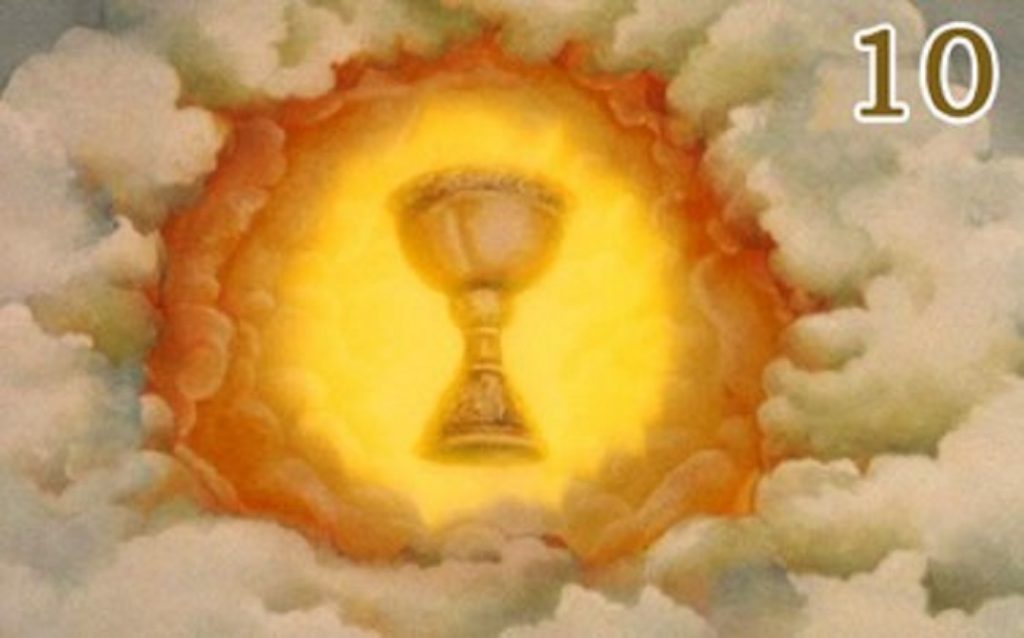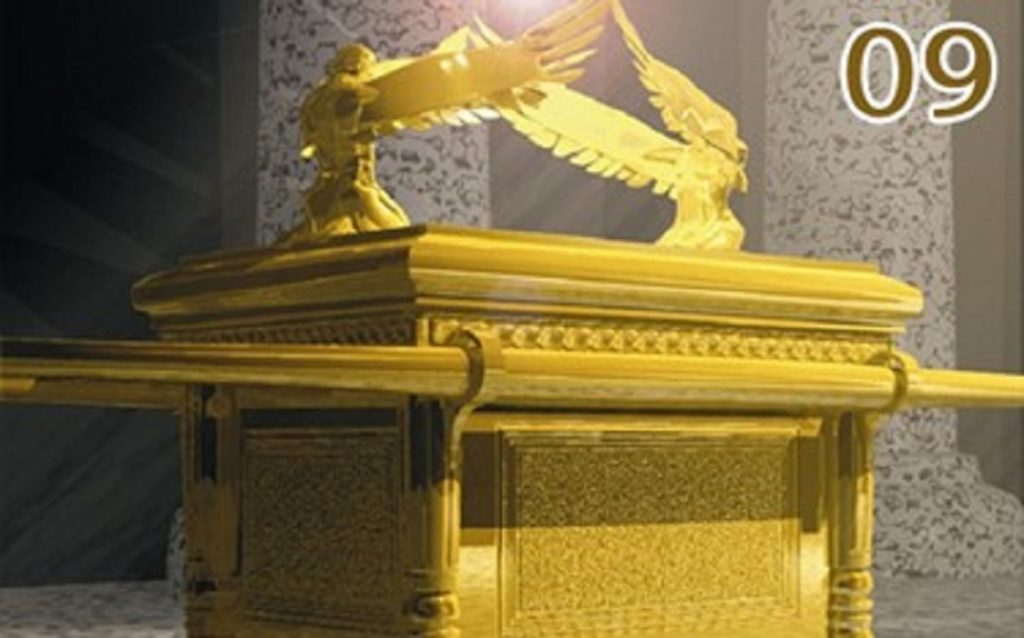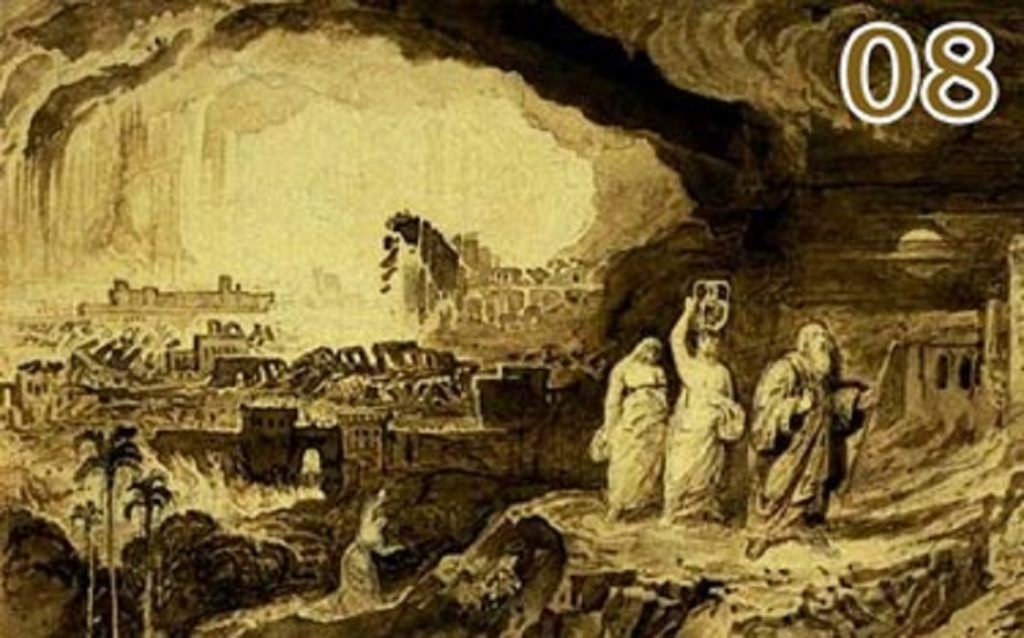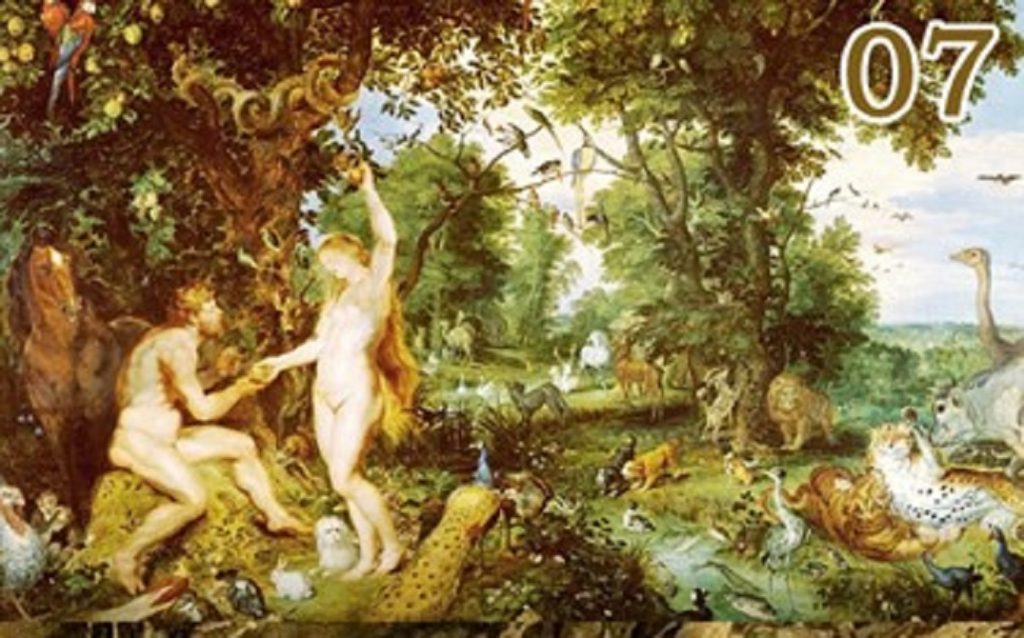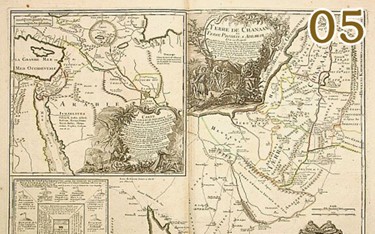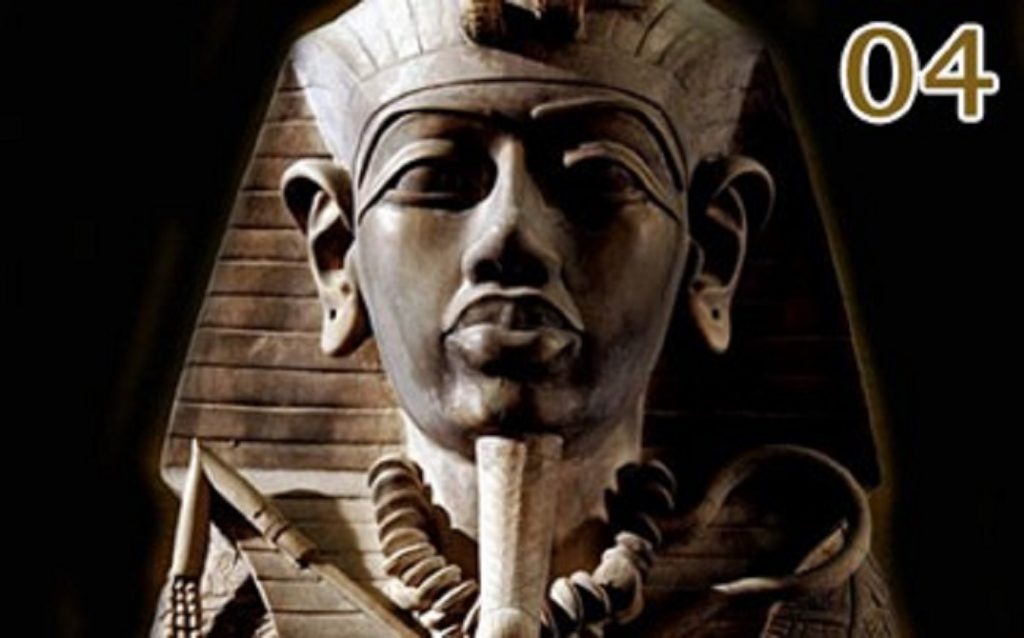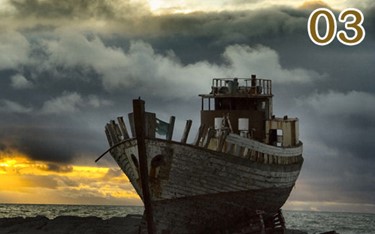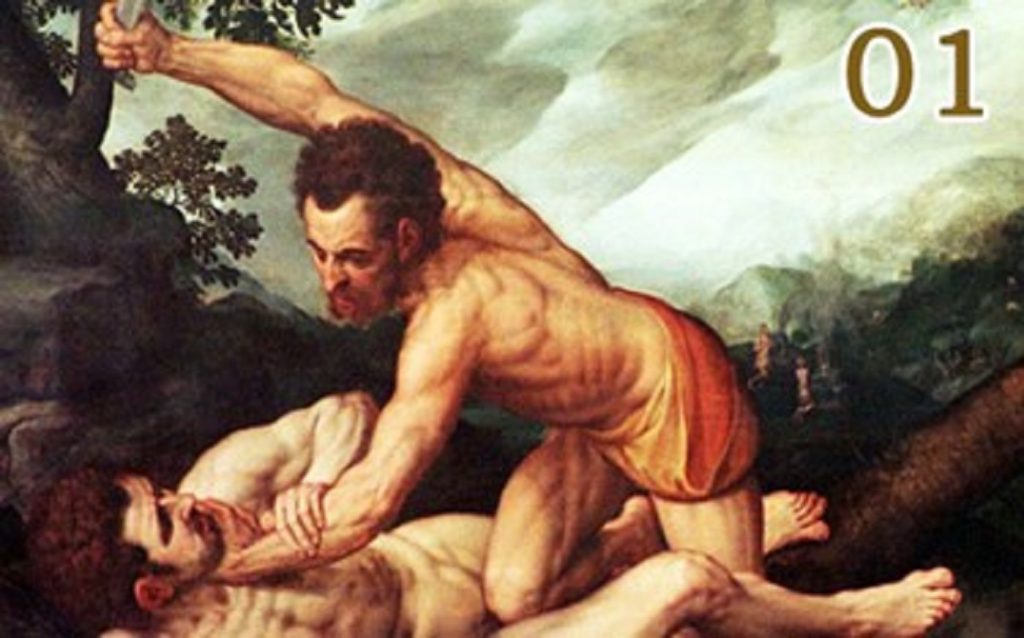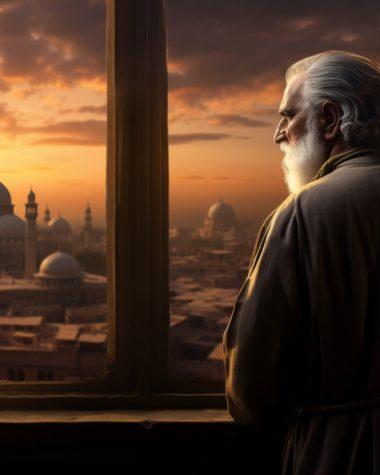The Bible! Is there in human knowledge any object, place or person that can be debated, accused and told more than the Bible? Certainly few things in human culture can match the Scriptures when it comes to history, legends, and controversy.
The Bible is a source of knowledge, it is the cornerstone of Christianity and the masterpiece of over a billion believers worldwide. But, at the same time, its translation from Hebrew, Aramaic and Ancient Greek, the ciphered language, the missing passages and the mysterious way in which it is written, mysteriously surrounds a series of subjects and episodes with divine “touch”.
Ten of them are distinguished by the mystification woven around them.
- THE HOLY GRAIL
Mystery: Where is the Holy Grail?
According to Christian mythology, the Holy Grail was the amphora, the vessel or cup used by Jesus at the Last Supper, a vessel said to have miraculous powers.
There is a legend that speaks of Joseph of Arimathea, a close friend of Jesus and the one who buried his lifeless body, the one who came into possession of the Grail after an appearance of the Savior himself would have handed him over.
Joseph allegedly took the dish and asked his apostles to transport it to Britain. Belief in the Grail and interest in possible places here it could be have never faded. It was assumed, over time, that he would be in the possession of several groups.
Most of this suspicion was aroused by the Knights Templar, probably because they were at the height of their influence as stories about the Grail began to circulate.
There are, in some churches, cups suspected to be the Grail. One such example is that of St. Mary’s Cathedral in Valencia, whose Holy Chalice is believed to have been transported by St. Peter to Rome in the first century, and then to Huesca, Spain, by St. Lawrence in the third century.
The Holy Chalice of Valencia The Valencian has some characteristics for which it would qualify as a true Grail, its origins being approximated between the 4th century BC. and 1st century AD, somewhere in the Middle East.
Other histories support the idea that the Grail is buried under Roslin Chapel or lies deep in the cellars of St. Michael’s Tower on Glastonbury Hill, UK. At the same time, some sources advance the idea that secret members of an occult bloodline protect the Grail.
However, perhaps the darkest suspicion hovering around this idea, born of the Latin form of the term “San Graal” – “Sang Real”, meaning “royal blood”, concerns the existence of possible followers of Jesus Christ, descendants even mentioned by some of the many apocryphal scriptures (scriptures written at the same time or even earlier than the biblical ones, but which did not form part of the Bible).
But this remains, until eloquent evidence, just an impactful invention of a contemporary bestseller.
- ARK OF THE COVENANT
Mystery: Where is the Ark of the Covenant?
The Ark of the Covenant also known as the Ark of the Testimony, the artifact mentioned in the Exodus chapter of the Bible, is the most important treasure of the „Chosen People”.
For the Israelites, it was the most sacred object on Earth, created by God Himself, through Moses, on Mount Sinai. The ark was a massive coffer, polished with gold, 118 centimeters long, 78 centimeters high and wide, with a pair of wooden handles on either side and two gold cherubim arranged face to face, with outstretched wings, above the lid.
The coffer was to house the sacred relics, including the two stone tablets on which were written the Ten Commandments and a vessel with a hand from heaven, which had fallen to feed the Jews in the wilderness after crossing the Red Sea, when they were released from slavery in Egypt. Jerusalem, the capital of the kingdom of Israel and the home of Solomon’s Temple, was also home to the Ark of the Covenant.
In 607 BC the city was looted by the Babylonians, killing hundreds of thousands of Jews. 70 years later, when the Israelites returned to the city, the Ark was gone. It is not known for sure what happened to this priceless relic ever since, and various rumors have been fueled only by speculation.
Of these, the most widespread is that the Ark was hidden by the Israelites before fleeing the city with the Babylonian occupation. Possible locations are said to be Mount Nebo in Egypt or Ethiopia.
The question is, however, if the ark had been hidden by the Israelites, why did they not recover it when they returned to rebuild their city? Despite the lack of historical evidence, Ethiopian Orthodox faith in the Ark of Aksum continues to be strong.
According to legend, the Ark of the Law, Israel’s most precious treasure, was hidden in the huge burial site of the kings of Aksum. More than 1,700 years old and 24 meters high, the Aksum Obelisk, in which the Ark is supposed to be located, weighs no less than 100 tons.
The mystery of the absolutely incredible erection of the obelisk made many launch all sorts of theories, some more or less phantasmagoric. But even to this day, archaeologists have not been able to fully explore the underground labyrinth beneath the granite colossus.
In addition, today’s scientists have failed to explain why the underground labyrinth is so heavily guarded by deadly traps for anyone trying to explore the tunnels.
Some believe that the ark was destroyed by the Babylonians, while others believe that God Himself hid the ark by divine intervention and that the artifact will be found only by the righteous. Since there is no mention of its destruction, people have not stopped searching for it until today and trying to unravel the great mystery.
- SODOM AND GOMORRAH
Mystery: Were these real cities? And if so, where were these cities?
For the sins and moral defilement of their inhabitants, Sodom, Gomorrah, Admah, and Zeboim were destroyed by “fire and brimstone from God in heaven” (Genesis 19: 24-25). In Christianity and Islam, the names of the two cities have become synonymous with total, unforgivable sin, and their fall is mistaken by the proverbial manifestation of the Lord’s wrath.
However, the historical existence of Sodom and Gomorrah is still a matter of debate among archaeologists. According to the Bible they are located somewhere near the Dead Sea.
Possible candidates become, in this situation, the sites discovered or visited by archaeologists Walter E. Rast and R Thomas Schaub in 1973, including Bab edh-Dhra, excavated in 1965 by archaeologist Paul Lapp.
Other possibilities include the regions of Numeira, es-Safi, Feifeh and Khanazir, which were also visited by Schaub and Rast.
All these sites are near the Dead Sea, show traces of burns and sulfur on many of the stones and are characterized, it seems, by a sudden cessation of population towards the end of the early Bronze Age. South of the Dead Sea is a mountain known as Mount Sodom. The location of the five cities that are said to have been destroyed along with Sodom and Gomorrah was established by making maps using satellites, by identifying geometric shapes, especially rectangular.
The city walls discovered in these places and the houses between them are substantial in size, indicating that tall people once inhabited these places. Even traces of a ziggurat (pyramid in stairs) have been found, along with similar shapes as the shape of the Egyptian Sphinx is found in the region.
Hundreds of sulfur formations were found here, stones composed of pure sulfur powder. Subjected to the tests of the greatest volcanologists, it was confirmed that nowhere else in the world, not even near active volcanoes, stones of such composition have not been found.
- THE GARDEN OF EDEN
Mystery: Where is the Garden of Eden?
While most theologians and “biblical” initiates believe that the passage about the Garden of Eden is most likely symbolic, others believe that the place did exist right here on Earth. Moreover, the Bible would give some pretty clear clues as to its exact location.
This belief led to the organization of many attempts to locate the Garden. The story of creation in Genesis mentions the geographical location of both Eden, the garden of the four biblical rivers (Pison, Gihon, Tigris, and Euphrates), and the three biblical regions (Havilah, Assyria, and Kush).
There are hypotheses indicating the position of Eden either in the area of the springs of the Tigris and Euphrates rivers, north of Mesopotamia, or in Iraq, Africa or the Persian Gulf. While the true location remains a mystery, there is a fascinating detail of the story: Ethiopia is mentioned as being near or surrounding the Garden of Eden in Genesis 2:13 („And the name of the second river is Gihon: the same is it that compasseth the whole land of Ethiopia.”).
Since 1974, paleontologists have excavated six million years of life and concluded that Ethiopia can be declared the scientific location of human origins, a true Garden of Eden, from the perspective of Science.
- BIBLE CODES
Mystery: The Bible seems to contain encrypted messages; is it a coincidence?
“But as for you, Daniel, conceal these words and seal up the book until the end of time.” (Daniel 12:4). Researchers have confirmed in recent years a hypothesis that the Bible includes, in addition to obvious spiritual guidance, a certain secret code that can reveal events that took place and will take place thousands of years after the writing of the Bible. The biblical code was discovered in the Old Testament from the original version of the Bible, written in Hebrew.
The author of this discovery is Dr. Eliyahu Rips, one of the world’s leading experts in group theory, the basis of quantum physics. Rips’ discovery was confirmed by renowned mathematicians at Harvard, Yale and the Hebrew University.
On September 1, 1994, Israeli Prime Minister Ytzhak Rabin was warned in a letter from a Jewish mathematician that his name had been decoded from the Bible text, along with the phrase “murderer will kill.” The message was ignored. On November 4, 1995, Rabbi was killed with a bullet in the back by an individual believed to be invested with a divine mission. Is it an assassination codified in the Bible over 2000 years ago?
Following the event, a whole series of other episodes explicitly deciphered from the Bible came true. Rips’s theory of the biblical code considers the Bible to be a gigantic crossword puzzle. To find the code, Rips removed all the spaces between the words and turned the entire original Bible into a continuous string of 304,805 characters.
The information is obtained by selecting each Nth letter, where N has a precise and properly chosen value. A simple example would be the following: we have the sentence “Cum sa obtii date”, which we compact and it becomes “cumsaobtiidate”, from which we will select, starting with the first, every fifth letter – “CumsaObtiiDate” and thus results the word “code”.
With the help of a computer, words and phrases hidden by the interval conduits are searched in this matrix formed by the biblical text brought in the form described above. It starts from the first letter of the Bible and searches for each sequence of possible intervals the requested words, deciphered with intervals of one, two, three letters, etc., up to several thousand.
Then the same search operation is repeated starting from the second letter and thus continuing until the last letter of the Bible.
- LOST TRIBES
Mystery: What happened to the Ten Lost Tribes of Israel?
Ever since the Assyrians exiled the lost tribes of Israel in the eighth century BC, the mystery of continuing their life from that moment has deepened over time, without ever being elucidated.
Where did they go? Are the statements of some contemporary groups, which claim to descend directly from the Lost Tribes, legitimate?
More than 2,700 years ago, the Assyrians exiled the ten tribes of the Kingdom of Israel. In 722-721 BC, the Ten Tribes that made up the Northern Kingdom of Israel disappeared. Conquered by the Assyrian king Shalmaneser V, they were exiled to Upper Mesopotamia and Medes, Syria and Iraq today.
The Ten Tribes have not been seen since. Or … were they seen? Jacob, the son of Patriarch Abraham, was renamed Israel when God revealed himself to him as he left Padn-Aram, and blessed him. Jacob had 12 sons, each of whom became the father of one of the twelve tribes of Israel: Reuven, Shimon, Levi, Yehuda, Issachar, Zevulun, Dan, Naphtali, Gad, Asher, Joseph, Benjamin.
In the land of Canaan, each of the 12 tribes of Israel founded a different region on either side of the Jordan River. After a longer period, a monarchy was established, but with the death of King Solomon, the state was divided in two.
The tribes were divided politically and territorially, with Judah and Benjamin in the south, loyal to the House of David, and the rest of the tribes in the north, ruled by a monarchical succession. The southern tribes are the historical roots of most Jews as they are known today. And the Ten Tribes of the Northern Kingdom? They seem to have been removed for eternity.
But the prophet Ezekiel dreamed of a different future: “I will take the children of Israel, and gather them, and bring them to their own land. And they will no longer be divided into two kingdoms. ” Over the centuries and continents, prophetic words have planted in the souls of the Jews the idea that those of the same tribe will be brought back together and rebuild the kingdom of the Lord.
But first, the Ten Lost Tribes must be found. There are some sources that attest that descendants of these tribes were found in Persia and the Arabian Peninsula by Benjamin of Tudela, son of Jonah, who in 1165 embarked on a journey around the world, visiting mainly Jewish communities. However, these are only assumptions.
- THE PHARAOH OF THE EXODUS
Mystery: Who was the Pharaoh of the Exodus
It is clear that this attribute belongs to the pharaoh who ruled Ancient Egypt at the time when Moses parted the waters of the Red Sea and led his people to freedom, in what became known as the Exodus. But who exactly was this pharaoh, given that in this episode of the Bible he is not given a concrete identity?
Logically, it seems relatively easy to deduce, drawing a parallel between the time of the Exodus and the pharaoh of Egypt at that time. But there are also disputes over the Exodus regarding the exact date of the biblical event.
The researchers concluded, deciphering the chronological framework suggested in Kings 6:1, that the Scriptures would advance the year 1445 BC. as the year of the Exodus. If the information is correct, it happened in the third year of the reign of Pharaoh Amenhotep II.
However, according to additional information from the Old Testament, it appears that Amenhotep’s predecessor, Thutmose III, was the only pharaoh in the chronological interval specified in Kings 6: 1 who ruled long enough (54 years) to be on throne at the time of Moses’ departure and to die shortly after his return to Egypt.
This would mean that Thutmose III would be the pharaoh of the Oppression, and Amenhotep II the pharaoh of the Exodus. The most common image imagined in popular culture is that of Ramses the Great, as the pharaoh mentioned in the Old Testament, although there is no documentary or archaeological evidence that he had anything to do with the Egyptian plagues or that he followed Jewish slaves fleeing Egypt.
There would also be some suspicion about Merneptah, in the form of a poem by the so-called Israel Stale: “Israel has been wiped off the face of the earth – his seed no longer exists.” However, it cannot be said that from this phrase any evidence emerges that firmly supports the identity of a certain pharaoh in the position of the one during the Exodus.
- NOAH’S ARK
Mystery: Where is Noah’s Ark?
At the latest from the time of Eusebius of Caesarea (275 – 339 AD), bishop in Palestine, theologian, apologist and historian of the Christian Church, to this day, the physical remains of Noah’s Ark have been the subject of fascination and their search represented an important field of activity for both Christians and Jews and Muslims.
Until recently, despite any alleged observations and expeditions, no physical evidence of the ark could be found. This search received the stigma of “witch hunting” from several archaeologists. Ark seekers had few clues to guide them to the artifact, beyond the Genesis mention of the “mountains of Ararat.”
By the beginning of the 21st century, two major candidates for exploration had surfaced: the so-called Ararat anomaly, near the peak of Mount Ararat (called the “anomaly” because until recently it was just an aerial and satellite image that looks like a blackened area of snow and ice on the peak) and the site of Durupinar, near Dogubayazit, 29 kilometers south of the Great Peak Ararat.
However, a group of Chinese and Turkish explorers searching for biblical relics recently announced that they may have discovered Noah’s Ark at an altitude of 4,000 meters on Mount Ararat in Turkey.
The team claims to have collected wood specimens from a structure on Mount Ararat in eastern Turkey, whose radiocarbon dating established its origins 4,800 years ago, a period that coincides with the time when it is believed to have Noah’s Flood took place. “We’re not 100% sure it’s about the Ark, but 99.9% are talking about it”, said Yeung Wing-Cheung, a Hong Kong documentary filmmaker and member of the 15-person team tracking Noah’s Ark.
The structure discovered by the Sino-Turkish partnership had several compartments, some of which contained wooden cages, in which it is believed that the animals were kept. Turkish local officials will urge the Ankara government to apply for UNESCO International Heritage status so that the newly discovered site can be protected while archeological excavations will be carried out around it.
According to the biblical story in the Old Testament, God decided to pour a flood on the earth after seeing how corrupt and degenerated and told Noah to build an ark to house a pair of each animal species. After the floodwaters receded, the Bible says, the ark remained frozen on a mountain. Many believe that Mount Ararat, the highest point in the region where it is located, is where Noah’s Ark and its occupants returned to earth.
- The tempting serpent
Mystery: What did the animals look like before Original Sin? What about the man?
“So the Lord God said to the serpent, “Because you have done this, cursed are you above all livestock and all wild animals; you will crawl on your belly and you will eat dust all the days of your life (Genesis 3:14) The phrase “you will crawl on your belly”, uttered as a punishment from the Creator, makes it quite obvious that before this condemnation, the serpent, as we know it today, looked different or, at least, had another means of locomotion. What was it?
Did the serpent have wings and fly before being condemned to a life of crawling, or at least some limbs to move on the ground, like lizards? Given the shape and size of snakes, regardless of their species of origin, it is quite difficult to imagine that they had wings or even legs.
At best, they might look like myriapods, but certainly this locomotor feature would not have made it any easier for them to move, so that the deprivation of dozens of legs would come as a curse.
- CAIN’S RUN
Mystery: Were there other people on Earth besides Adam, Eve, Cain, and Abel? Who created them?
Behold, You have driven me this day from the face of the ground; and from Your face I will be hidden, and I will be a vagrant and a wanderer on the earth, and whoever finds me will kill me.” So the Lord said to him, “Therefore whoever kills Cain, vengeance will be taken on him sevenfold.”
And the Lord appointed a sign for Cain, so that no one finding him would slay him. Then Cain went out from the presence of the Lord, and settled in the land of Nod, east of Eden.
Cain had relations with his wife and she conceived, and gave birth to Enoch; and he built a city, and called the name of the city Enoch, after the name of his son. Now to Enoch was born Irad. (Genesis 4:14-18). The first part of this series of verses only raises questions and leaves room for speculation. A very rigorous analysis can generate a debate starting from the phrases “whoever finds me” and “whoever kills Cain”, given that Adam, Eve and Cain were the only people on Earth, deducing from the biblical information of until then.
But, with enough indulgence, it can be considered that both God and Cain were referring to Adam, Eve, and the animals of the earth by the word “anyone,” even if it seems unnatural.
But the fact that, leaving after killing Abel, Cain went to the land of Nod, whose construction by God is not mentioned beforehand, and there he found a partner a woman, with whom he had a son who, in turn, became a parent, questioning many original premises.
Both the land of Nod, which would not have to be classified as such if it was not populated and therefore formed by someone, and Cain’s wife are two extremely controversial elements, which, however interpreted, advance the idea that outside the original pair, Adam and Eve, who conceived Cain and Abel, there were other people, whose existence is not mentioned in the opening verses of Genesis.
Even if we were to accept the idea that they were still children of Adam and Eve, Cain’s connection to a woman would have meant the cosanguineous connection with nothing more and nothing less than his sister.
We know nothing about the woman Cain had children with, but an incestuous episode, without any rebuke or subsequent divine punishment – at least mentioned in the Bible – is presented very explicitly in the Old Testament.
After the episode of Sodom and Gomorrah, the only believer and survivor is Lot and his two daughters.
Immediately after the destruction of the two cities: Lot and his two daughters left Zoar and settled in the mountains, for he was afraid to stay in Zoar. He and his two daughters lived in a cave. One day the older daughter said to the younger, “Our father is old, and there is no man around here to give us children—as is the custom all over the earth. Let’s get our father to drink wine and then sleep with him and preserve our family line through our father.” That night they got their father to drink wine, and the older daughter went in and slept with him. He was not aware of it when she lay down or when she got up. The next day the older daughter said to the younger, “Last night I slept with my father. Let’s get him to drink wine again tonight, and you go in and sleep with him so we can preserve our family line through our father.” So they got their father to drink wine that night also, and the younger daughter went in and slept with him. Again he was not aware of it when she lay down or when she got up. So both of Lot’s daughters became pregnant by their father. The older daughter had a son, and she named him Moab; he is the father of the Moabites of today. The younger daughter also had a son, and she named him Ben-Ammi; he is the father of the Ammonites of today. (Genesis 19:30-38)

